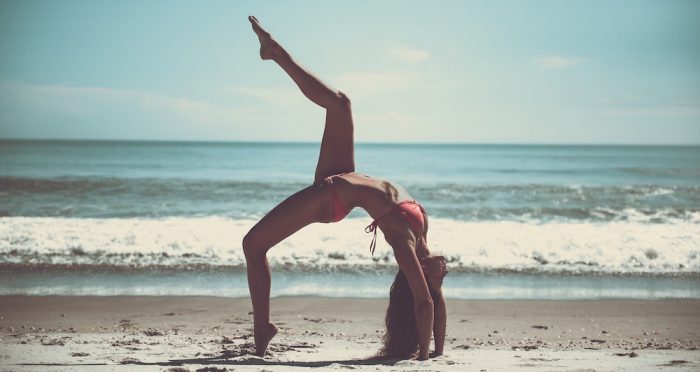This is a blog post that I’ve been wanting to write for many years.
But I’ve always been stuck on how to express myself in a way that does not convey superiority.
I became a yoga teacher right before yoga became mainstream. It was on the cusp of its explosion, at least in the part of the world where I live.
When I was growing up, my mother did yoga, and I was embarrassed to tell my friends because I thought it was weird. By the time I started on my own yoga journey, people had heard of it but it was still made fun of.
Shortly after I became certified as a teacher, Instagram launched, and the Insta-yogi craze hit with full force. It troubled me enormously, and I struggled to navigate this daunting and formidable territory. I had gone through a pretty traditional yoga teacher training and felt a deep sense of belonging in the gentle flow of the practice. It had never occurred to me that my yoga practice was something that should be shared online. I wanted to teach real people—not a mystery audience with whom the majority of interaction would be with likes and faceless comments.
It soon became apparent that if I didn’t keep up with this trend, I would fail as a self-employed yoga teacher, and so I started sharing the occasional picture if someone happened to capture me mid-practice. They always got a flurry of likes and comments, and for a short moment I would get caught up in a dopamine cycle of checking my phone every five minutes to see how many likes were on my picture.
Once it died down (I don’t have a big following, so it didn’t take long), I was then back to the empty silence of wondering what to post next. Should I engineer a precarious stand to prop up my phone to take share-worthy pictures and videos of my practice? Maybe I should invest in professional equipment? I was never blessed with an Insta-boyfriend, and although I spent many years with a professional photographer, he was generally reluctant to take these types of pictures. Shame, really—we could have been Insta-famous…
And what about the inspirational quote that you are supposed to add to your picture? Should I maybe approach it from an educational perspective and tell my modest audience how this pose will be of benefit to them? Maybe a Sanskrit chant with its translation to make sure everyone knows I’m an authentic teacher and have done my homework? What about the hashtags? Should I include the usual #blessed, #yogaeverydamnday, and #iloveyoga?
It all seemed overwhelming, and, although I appreciate other peoples’ posts and have found myself at times caught in the endless cycle of scrolling, hoping for something exciting to grab my attention, I struggle to find it in myself to join.
I resorted to posting the occasional time-lapse video of my practice, usually when I happen to be in a scenic location (which is rare), just to make sure that people know I still do yoga, but also to make sure my jiggly thighs aren’t too visible. I also want to point out that most of the clothing I wear to practice is mismatched and rarely branded, so there goes any attempt at tagging overpriced designer brands and thanking them for their awesome products.
I recently found out that many Insta-yogis go through a lengthy editing process, often using multiple apps to ensure a consistent colour balance throughout all their pictures, adjusting any body parts that aren’t flattering, and creating a strategic timeline of pictures so it doesn’t look like they were all shot on the same day. On top of that, many of our Insta-bunnies rely on paid software that will schedule the posts at optimum high-traffic times to maximise engagement.
This brings me to my next point, which is that both Facebook and Instagram have a strong algorithm that depends on likes and content engagement to increase the visibility of a post. So if you have a small following and your post only gets 10 likes, even the few people who do follow you are unlikely to see it. If your post gets more engagement, the app assumes that there must be something there that people want to see and therefore pushes it to the front of everyone’s viewing space. The more engagement, the more visibility.
Once you have started, it becomes an addictive reward/punishment cycle—and Instagram knows this. It knows that our brains get most addicted not to a substance but to the dopamine that is released when there is a moment of excitement. So what these geniuses do is they make sure that you don’t see all of your likes at once. They space them out over a period of time in small batches, so that you keep reaching for your phone to check and get your next dopamine hit.
Why do they care? you ask. Because the more you check your phone and open that app, the more chance you’ll see one of their strategically placed ads, which means more profit for them. Occasionally they get it wrong, but most of the ads you see are aligned with your search history and the people you follow. They target you as a potential customer based on what you have inputted into the internet over the past 10 or more years, and sometimes they are so accurate you do not even realise you are looking at an ad. It goes into your subconscious mind and stays there until the next time you see it, when it looks familiar and therefore increases your chances of clicking on it.
With the level of accessibility and connectedness we are now experiencing, anyone who is a little tech-savvy can become a famous model, teacher, or anything else they want to be (“influencer” is the correct term). The mind-boggling part about it is they don’t even have to be that good as long as their pictures are beautiful and they post an obscene amount of engaging content on a daily basis, again back to the algorithm. These people get paid a lot of money for their posts, and the yoga world is not excluded. Companies will pay influencers so much to post with their products that for many people now this is their only source of income.
It makes me wonder, How far it will go? Are people becoming so attached to their virtual world and so disconnected with reality that they would prefer to connect with an online yoga teacher than to go to an actual class?
Yes, the benefits of being able to practice in the comfort of your own home, to be able to pause the video whenever you want, to pick and choose teachers and classes when you fancy are clearly examples of our choice-saturated lives, but what about all the other elements that will be missed? What about the community? The relationship that is built by maintaining a consistent practice with one teacher over many years? What about the self-inquiry that comes to showing up and facing your own sh*t and being okay with being uncomfortable?
Have we all become so used to being spoon-fed while sitting on our couch that we are no longer able to find it within us to do something difficult?
How will yoga evolve from such a state? And yes, I agree that it is wonderful that people who previously may not have had access to yoga classes for either geographic or economic reasons can now also benefit from the practice—but somehow this misses the beauty of it.
Prior to the internet, if there were no teachers in your neighbourhood, you would travel to practice—maybe even all the way to India. You would learn what you could and then bring it home with you. You would practice on your own, or teach a friend and practice together until you could return and study some more. Over time, this built into an organic and sustainable practice.
The ability to practice alone—and I mean truly alone, not with an app or YouTube—is possibly the most challenging part of a committed practice. To show up day after day knowing that you could skip your entire practice and no one will know, knowing that you could skip that pose you don’t like and no one will say anything, to still show up and practice with full awareness, that is integrity. It is integrity to yourself, to have the self-respect to commit to something that is of benefit to your body.
And yes, there are days when we don’t want to practice. Maybe there is a genuine need to rest, and so we take that decision consciously—but always with the awareness that we are choosing what we need in that moment.
This happy-go-lucky attitude where it seems most people are more interested in getting into a handstand so they can post it on “the ‘gram” means that they are missing all the other wonderful aspects of a practice rooted in self-awareness and commitment.
If we can’t commit to ourselves, how can we commit to others? To a job? To a child?
We are so inundated with options that commitment now seems boring, and we are plagued with the feeling that there must be something better out there.
But what if the better thing can’t come through because you’re so damn busy jumping from one thing to the next?
~












Read 4 comments and reply